
Rods should be about 18" long.

Rods should be about 18" long.
The lock nut under the outrigger must first be loosened and then the tierod may be adjusted. If the locknut is rusted, penetrating oil and/or heat from a torch may be needed to loosen the nut. The rod may be a fine thread.
Technically, the Pulse being licensed as a three wheel vehicle, should have one outrigger tire 2" to 3" off of the ground when parked. I have never heard of anyone being ticketed for having all tires on the ground at once. You may have to play with the adjustment for the best ride due to the crown and quality of your local roads.
The outrigger fiberglass body shell is made of two pieces....top and bottom.
Rods should be about 18" long.
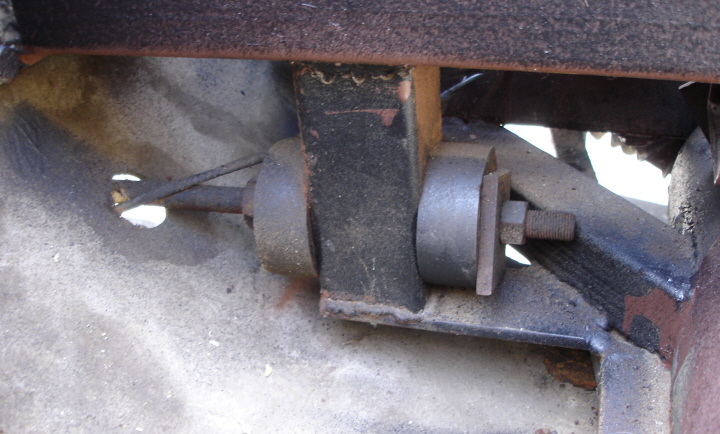
PROCEDURE TO CHANGE OUTRIGGER TIRES
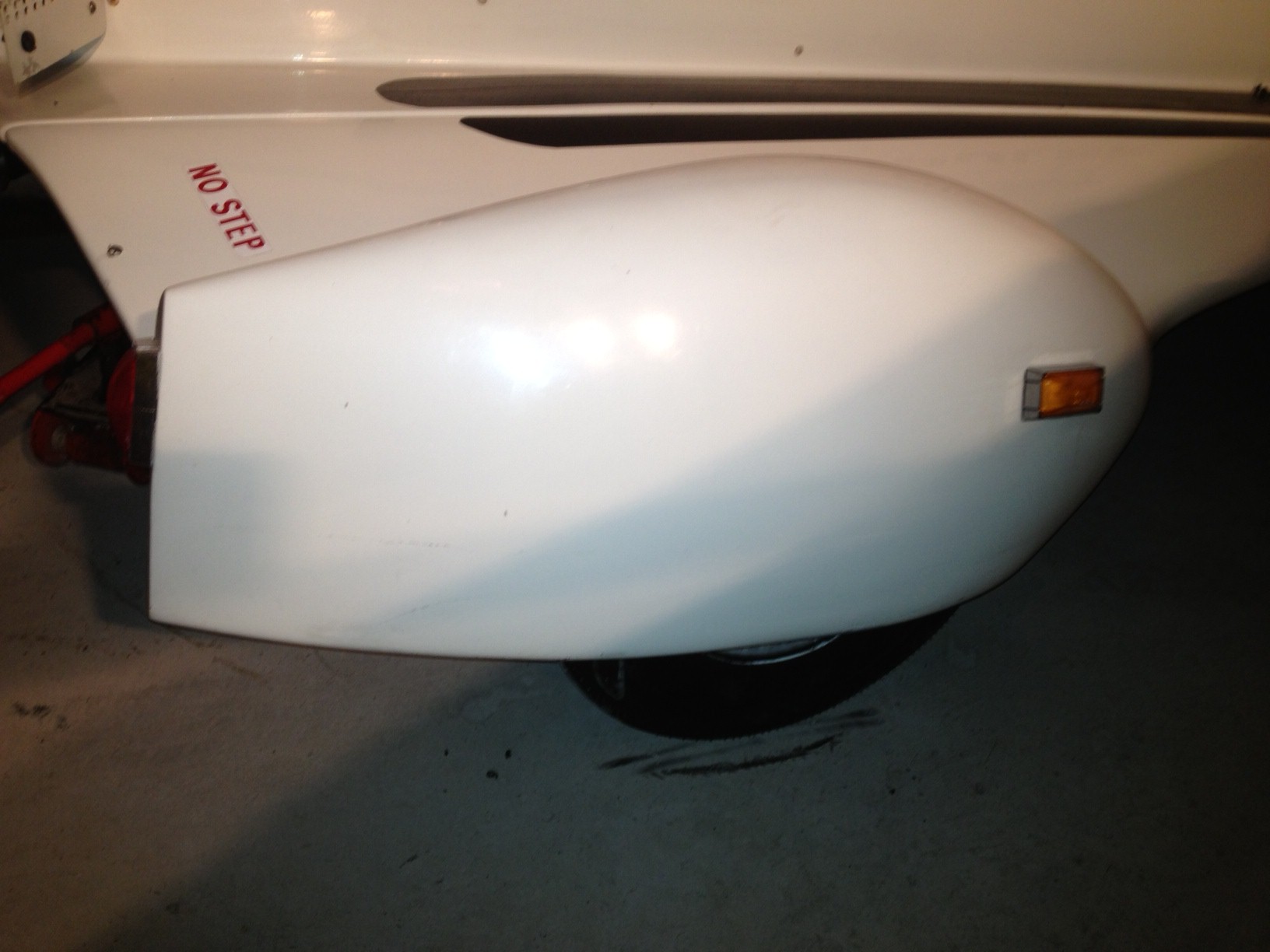
Raise Pulse body with a jack or air shocks so that it rocks to one side. Support the side you will be working on. It is not necessary to remove the lower fiberglass panel.
The tire axle is held in place by a split cap retained with two bolts. They are 5/16 fine thread HEX bolts with lock washers.
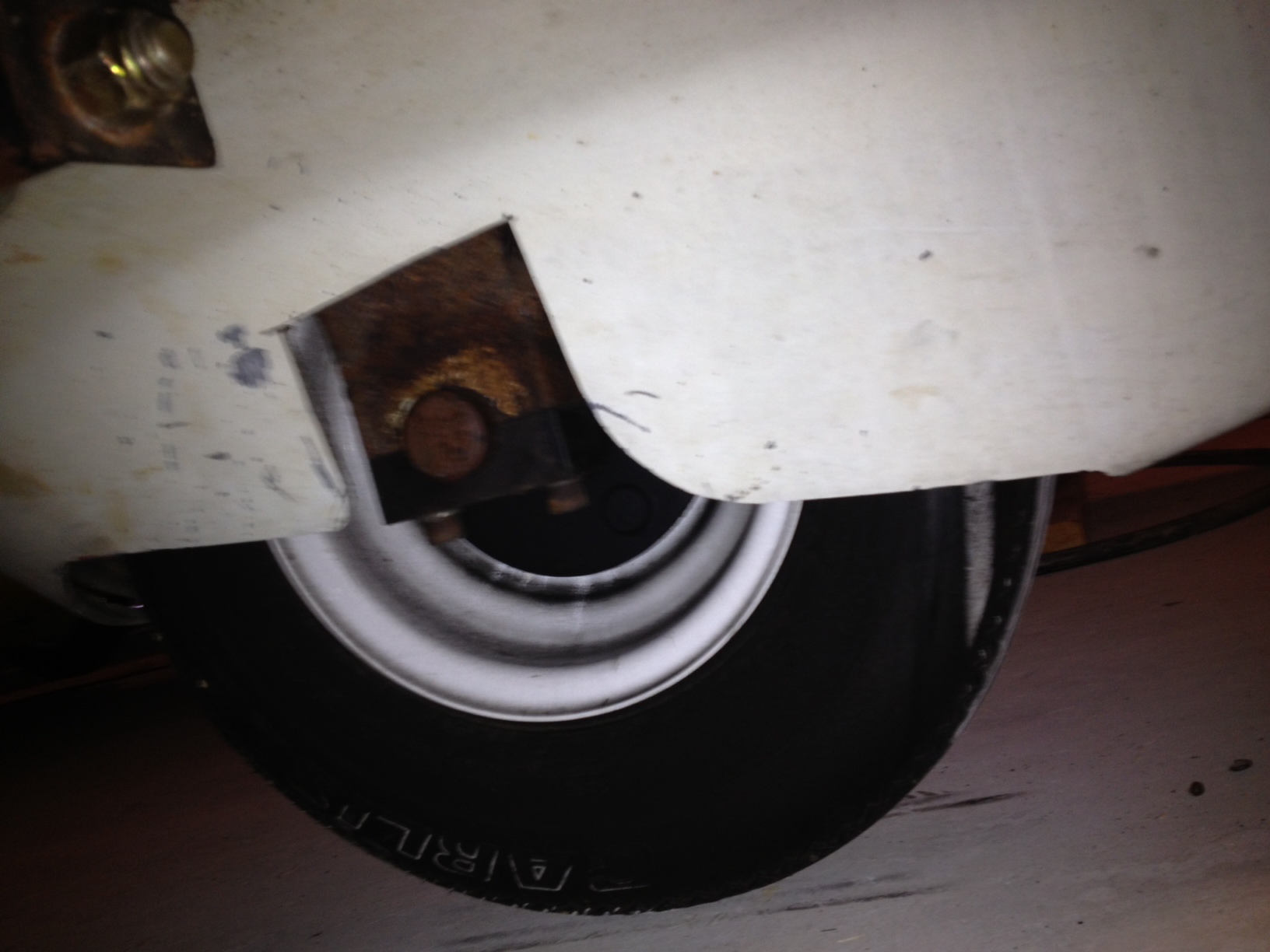
Remove 2 HEX bolts. The axle will come free and drop down with the wheel and tire attached.
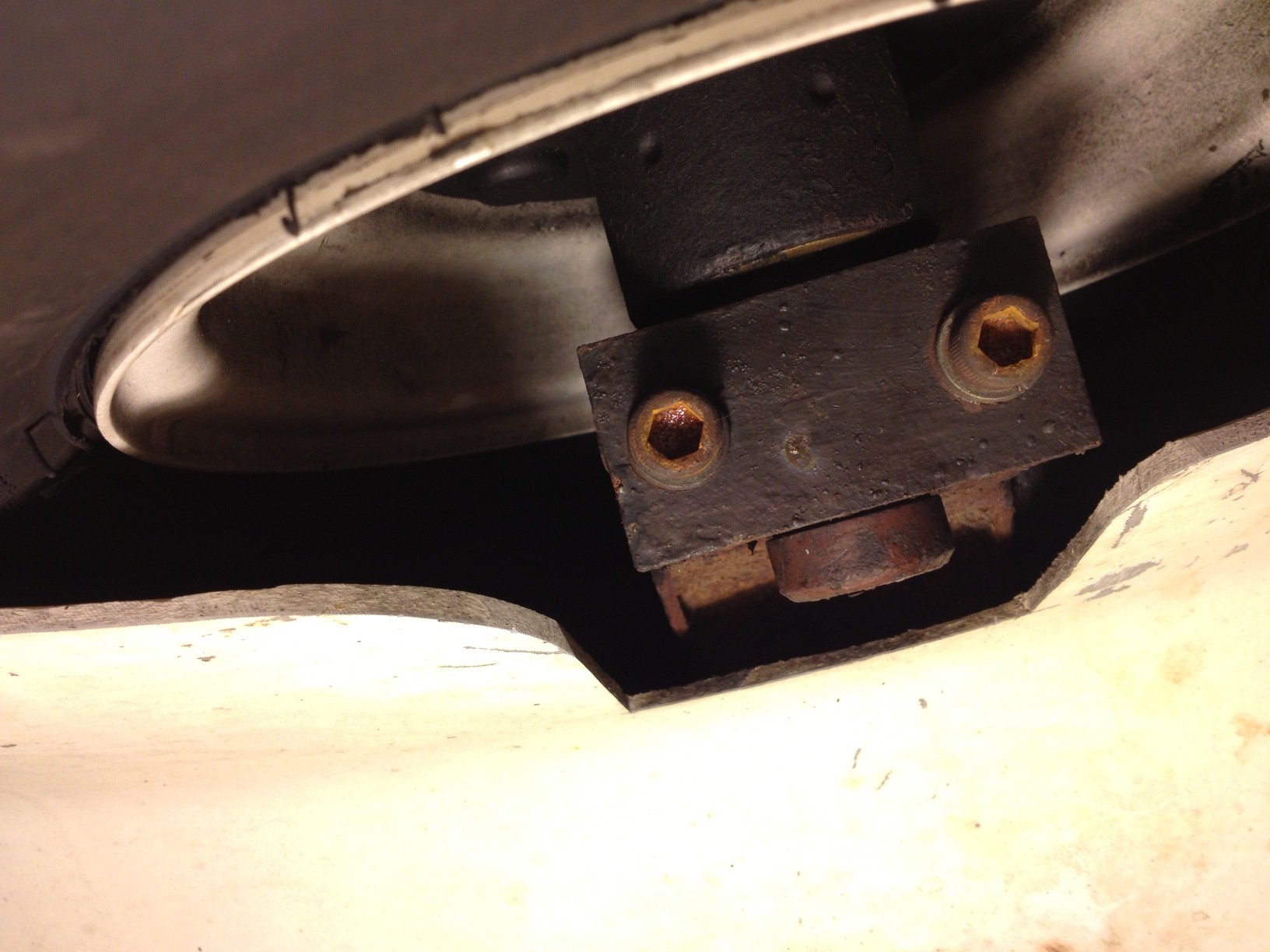
The wheel is held to the axle assembly with four bolts.
You can go to your tire dealer and have the tire replaced which is about $35.00
OR you can buy a new rim and tire already assembled at TSC or Walmart for about $50.00
These are just 8" trailer tires and any store that sells trailer supplies has them. Make sure and buy the 4 stud wheel and not the 5 stud wheel.

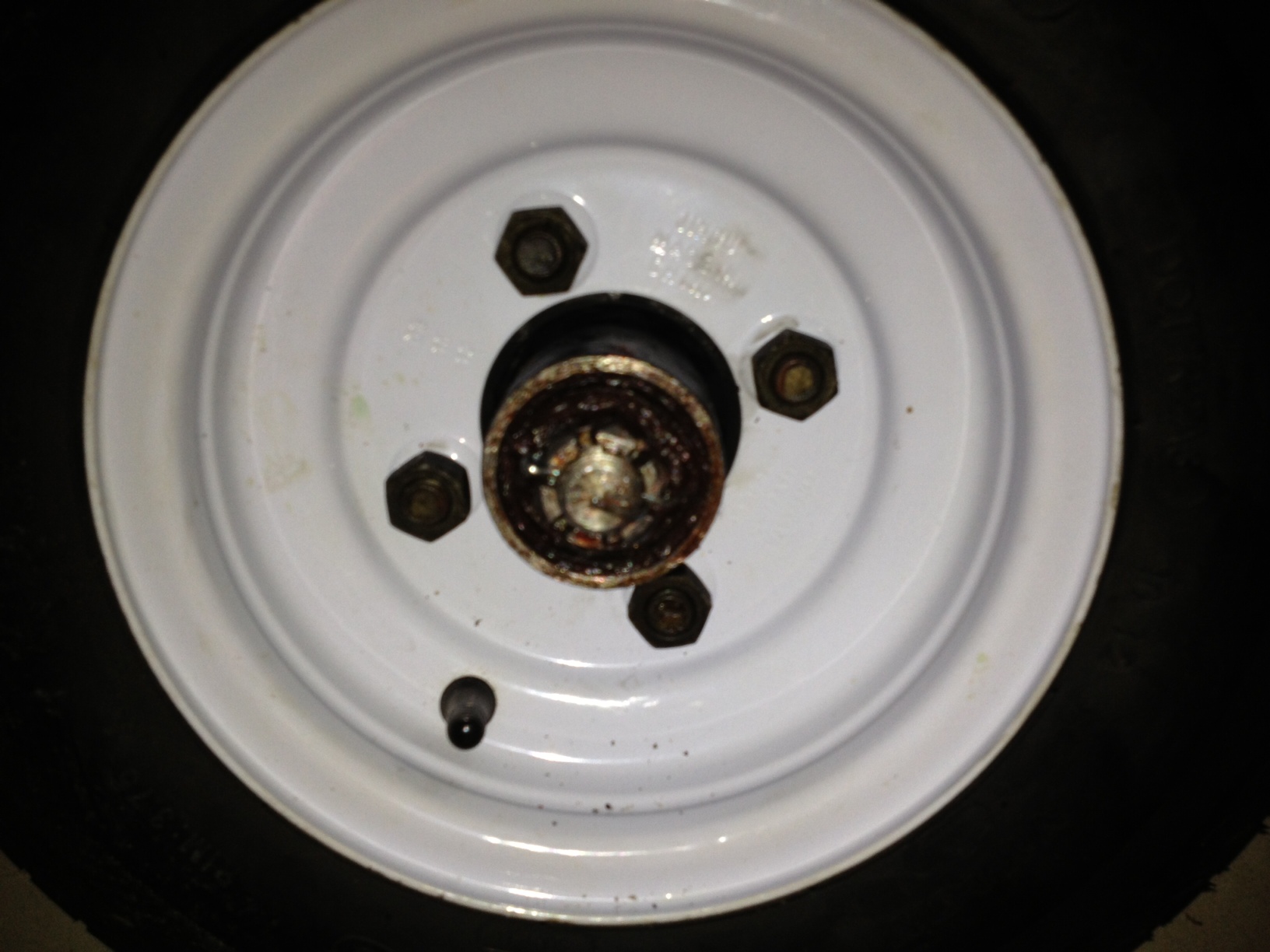
Make sure the tire is high speed and it would be best if you included an inner tube.
Also, have the wheel balanced before you place it back on the outrigger. Check your wheel bearings and repack them before reinstalling. You can do this by removing the cap that is taped into the end of the bearing assembly. Be careful this cap is thin and can be bent easily.
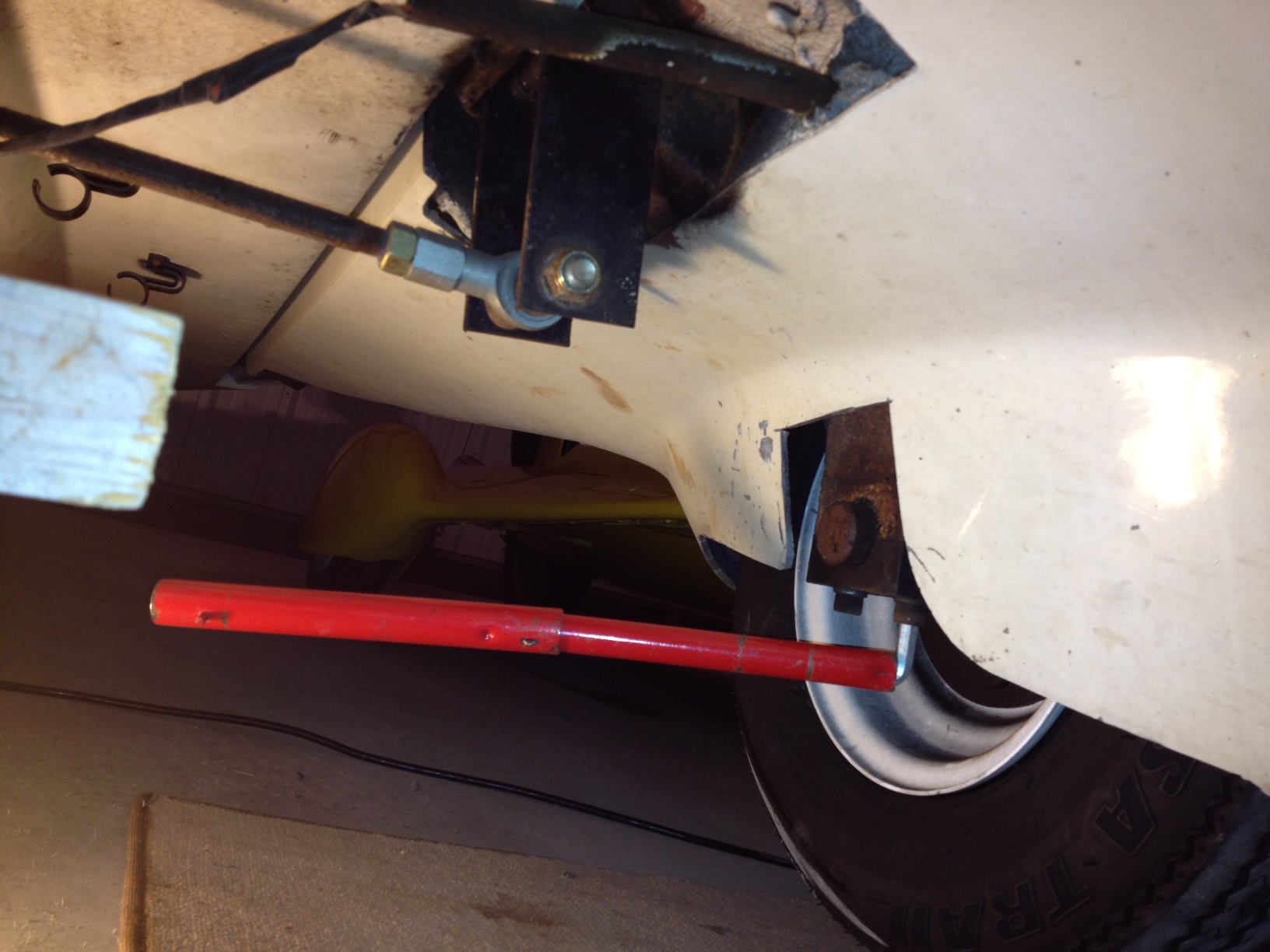

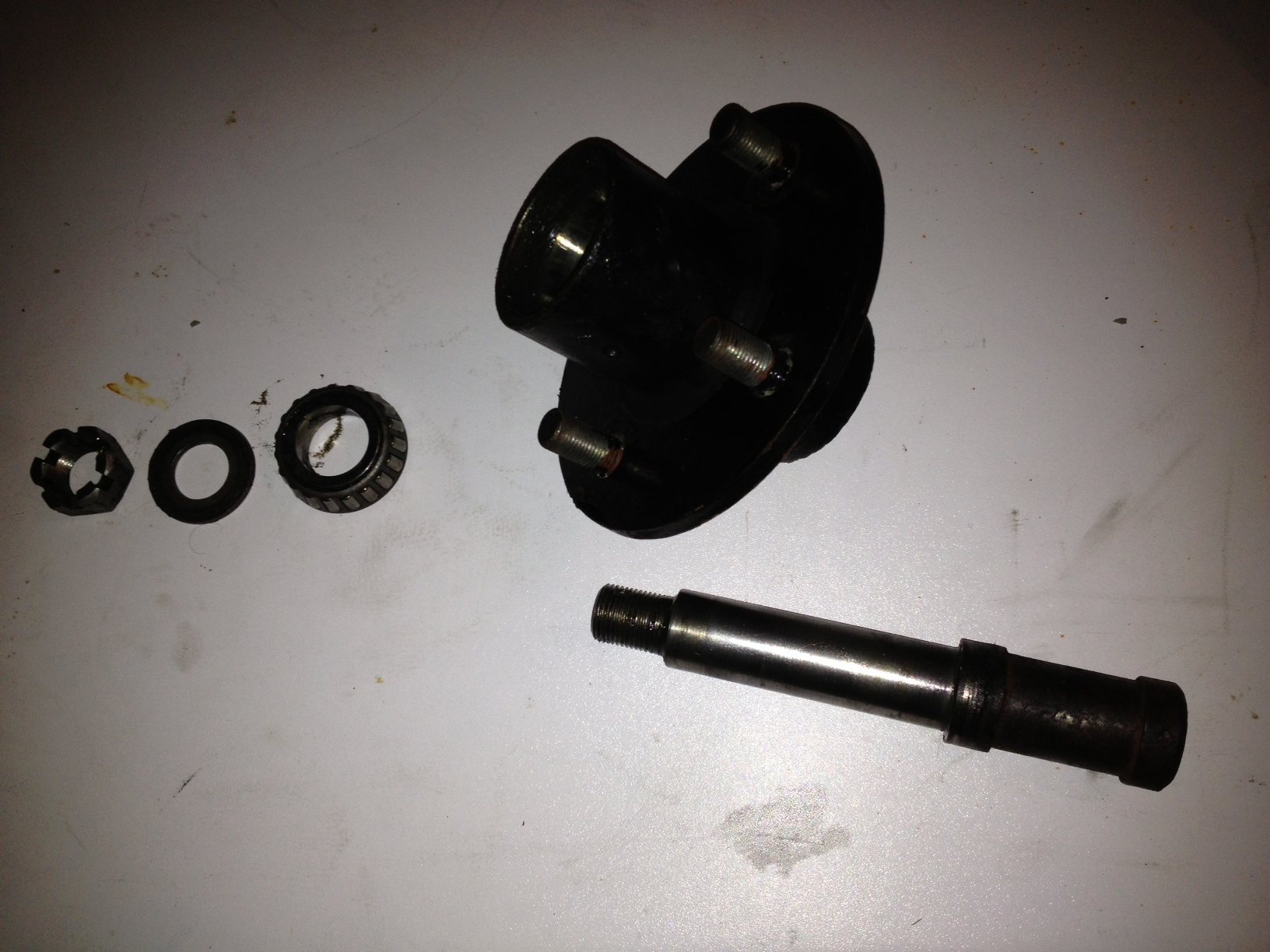
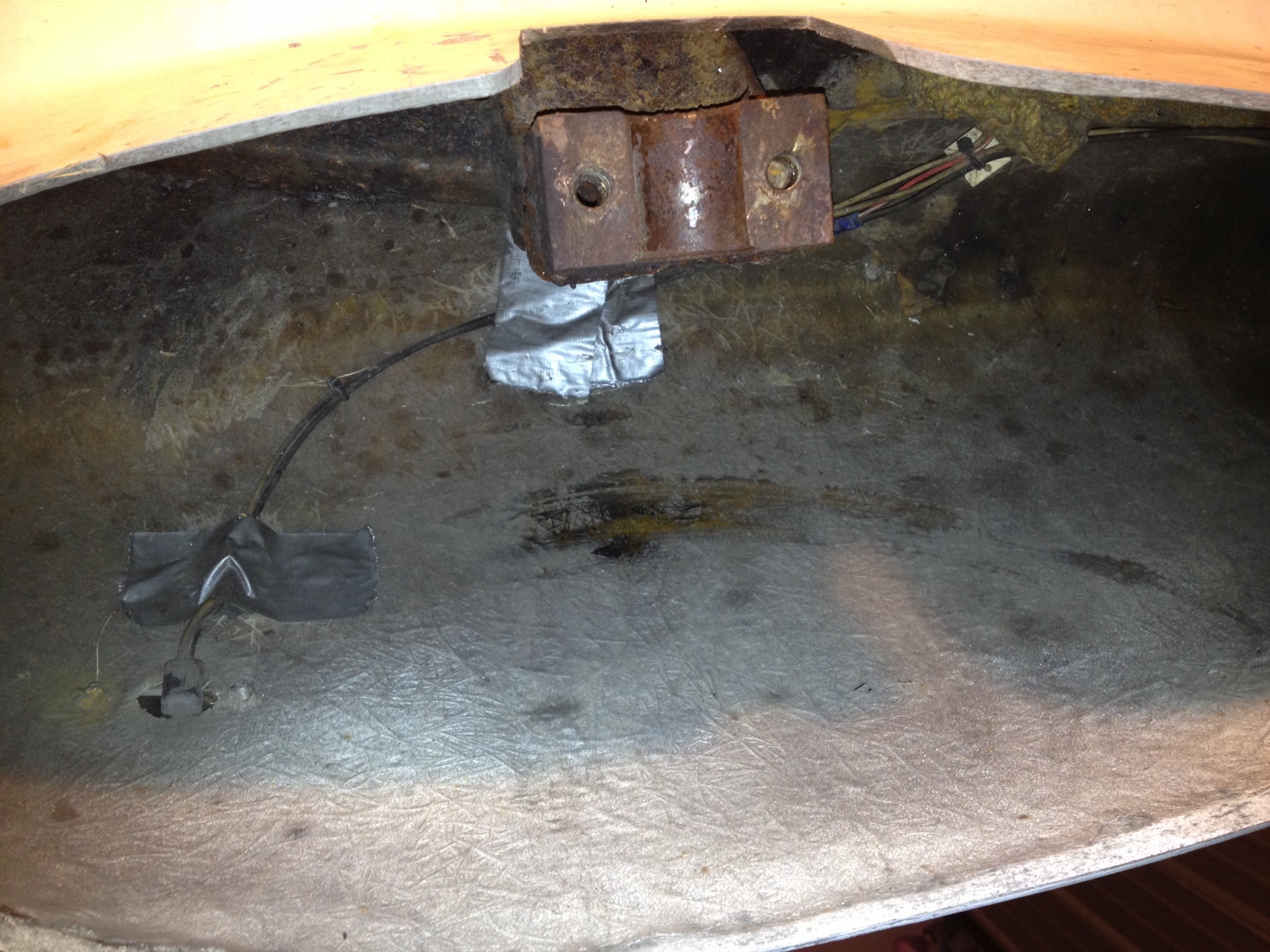
The tire pressure should be as stated on side of the tire as this helps hold the tire to the rim if they are tubeless (which most are).
Re-assemble to Pulse in reverse order and you are ready to go.
I STRONGLY RECOMMEND YOU CHECK YOUR BOLTS THAT HOLD THE OUTRIGER AXELS ON AT LEAST TWO TIMES PER YEAR, IT'S NOT FUN WHEN ONE OF YOUR OUTRIGGER TIRES FALLS OFF. THIS IS A VOICE OF EXPERIENCE.

For anyone that has fiberglass cracks, buldges, or an "unusual" amount of play in your outriggers, YOU SHOULD DEFINITELY INSPECT THEM CLOSELY!
From the casual inspection things looked OK, what you might expect in a 20 year old car, but after peeling back the "foam" and you can see someone was driving on "borrowed time"!
Imagine making a turn and putting a few "G"s on one of these outriggers. Best case...you come to a scraping halt, crawling from your Pulse, which is now laying on it's side. Worst case you go spiraling into on-coming traffic.
The only thing holding my outriggers together was that foam they sprayed. It might have seemed like a good idea at the time, but from my years of surfing I learned un-protected foam just loves to suck up water, which does a nastly job on fiberglass and, in the case of the Pulse, it eats up steel.
Lucky for me I'm using this unit to do some well needed redesign to the frame, so pulling it apart was part of the plan, anyway. The parts going back in #77 will be powder coated and NO FOAM!

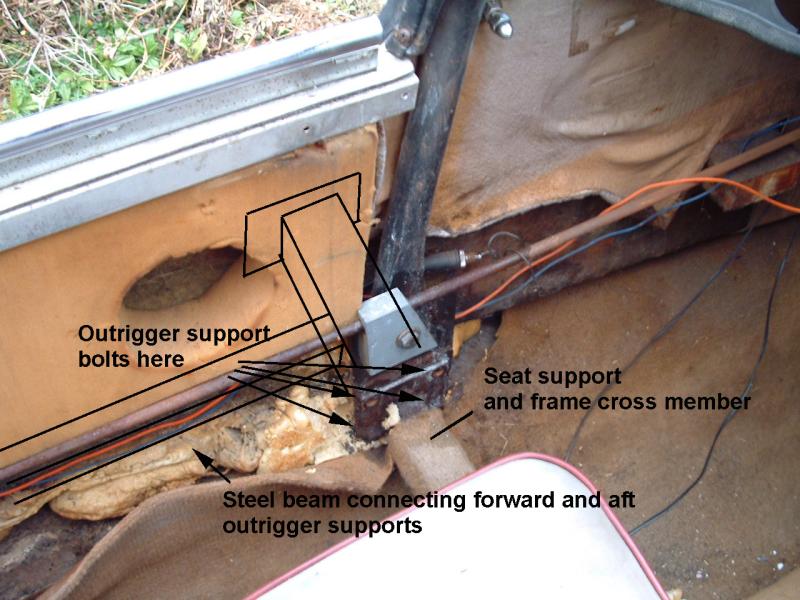
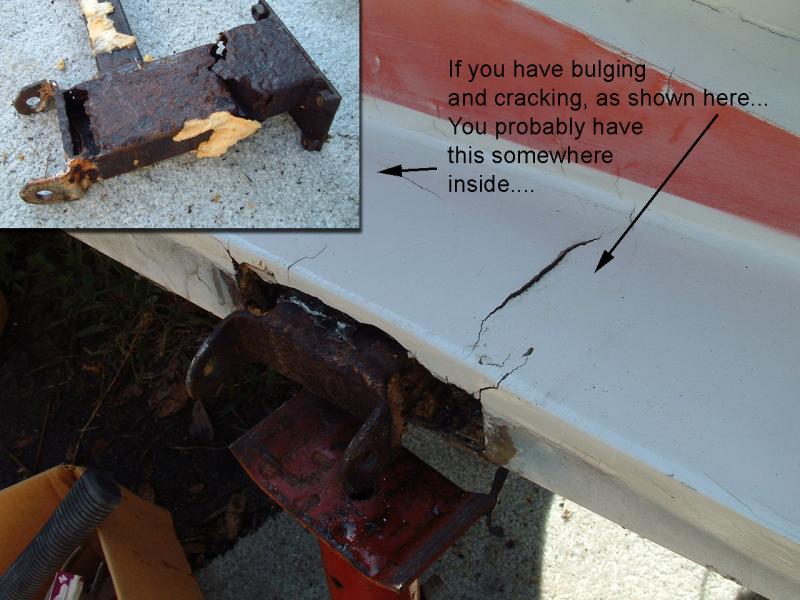
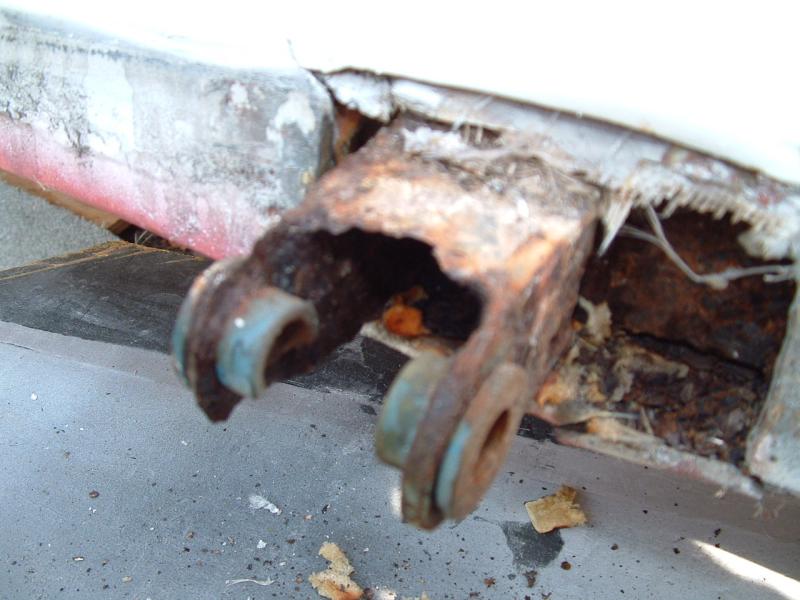
Tom Donaldson reported on Facebook in 2022 that he obtained the replacement rubber spacers from Izzy_USA.com .

Dave Bauer................
As far as your outriggers go, I found that it is a balance between adjusting the outriggers and the front and rear suspension. I found that the outriggers should have a slight downward slope on the wings with a negative camber on the wheels. Next adjust your front and rear suspension so the Pulse sits with a zero trim (front to rear is level) and one of the outrigger wheels is only about 2-3 inches off of the ground. If both outrigger wheels sit on the ground when you and a passenger sit in the Pulse, you need to raise your front and rear suspension some more until one of the outriggers stays off of the ground.
The problem you have to look out for is that the Pulse tends to 'high side' when you turn. It transfers weight to the outboard outrigger in a turn and transfers the weight off of the rear suspension. This causes the machine to raise up in the rear and appear as if it is going to flip over. Some of us have taken steps to limit the travel of the rear shocks. Others have replaced the rear air shocks with coil-overs to fix that problem.
Submitted by Bob Cervero......
If you unbolt the outrigger from the inner frame you may be able to slide the assembly forward or back to clear the inner attachment points after removing the foam, and then lift them upwards.
Or you could cut the metal straps connecting the front outrigger support to the rear support and remove everything in pieces. Then make new supports, insert them and then weld new metal support straps in place.
Pulse # 199 has air-shocks front and rear. I have an onboard air pump, pressure gage and switching valve to monitor and or adjust front or rear shock pressure while driving.
I have been driving my Pulse for over several months during 2003 and racked up almost three thousand miles driving back and forth to work. I commute twenty-five miles one way. Eighteen miles of that commute is driving at speeds from 70 to 80 miles an hour. After becoming very confident driving this vehicle at highway speeds I have been playing with raising and lowering the air-shock in which rises or lowers the body/out-riggers. I have found the Pulse is best driven with the out-riggers just touching the ground. When making a normal ninety-degree or more turn in a Pulse with air-shocks, the out-rigger will lift six inches or more depending on the speed and pressure in the air-shocks. After completing the turn the body/out-riggers stay high until the load comes back on the shocks and has time to settle. During this time the Pulse will teeter -totter from out-rigger to out-rigger, creating an annoying, unwanted and possibly dangerous situation.
What causes this is the air-shocks (mainly the rears) unloading/extending from the side G loads in the turn. This is also confirmed by watching the air-shock pressure gage drop drastically. Once the air-shocks are unloaded/extended it takes a few seconds for them to settle back to normal ride position. The air-shocks being under pressure are actually helping (pushing) to assist the excessive roll problem. Bob Cervero has Pulse #61 with coil shocks and it does not exhibit this problem. One way I have found to help over come this problem is to lower the air pressure in the shocks. This has the major draw back of increasing the load and friction on the out-rigger tires. My first set of out-rigger tires lasted less than four hundred miles which is another problem in its self.
So how do we fix this over roll problem? Bob and I were discussing the problem and he came up with and idea of limiting the swing-arm travel. With that in mind the ideas starting flying. One idea would be to attach a right-angled rod by the upper shock mount and provide sliding blocks on swing-arm that the rods would travel through. The very ends of the rods would be threaded for adjustment and have rubber bumpers to soften the end limit of the extension. The adjustment would allow you to set the total ride height and control the lift of the out-rigger tire.
Ok now I'm going to start some controversy about the Pulse. My personal finding with owning a Pulse is this vehicle was never designed to drive on two wheels down the highway. The geometry of the production Litestars/Pulses front ends are not set up to do this. There is no way you can get feed back from countering steering like you do from driving a motorcycle. The Pulse uses a gearbox with reduction for steering, which completely eliminates any counter-steering feed back.
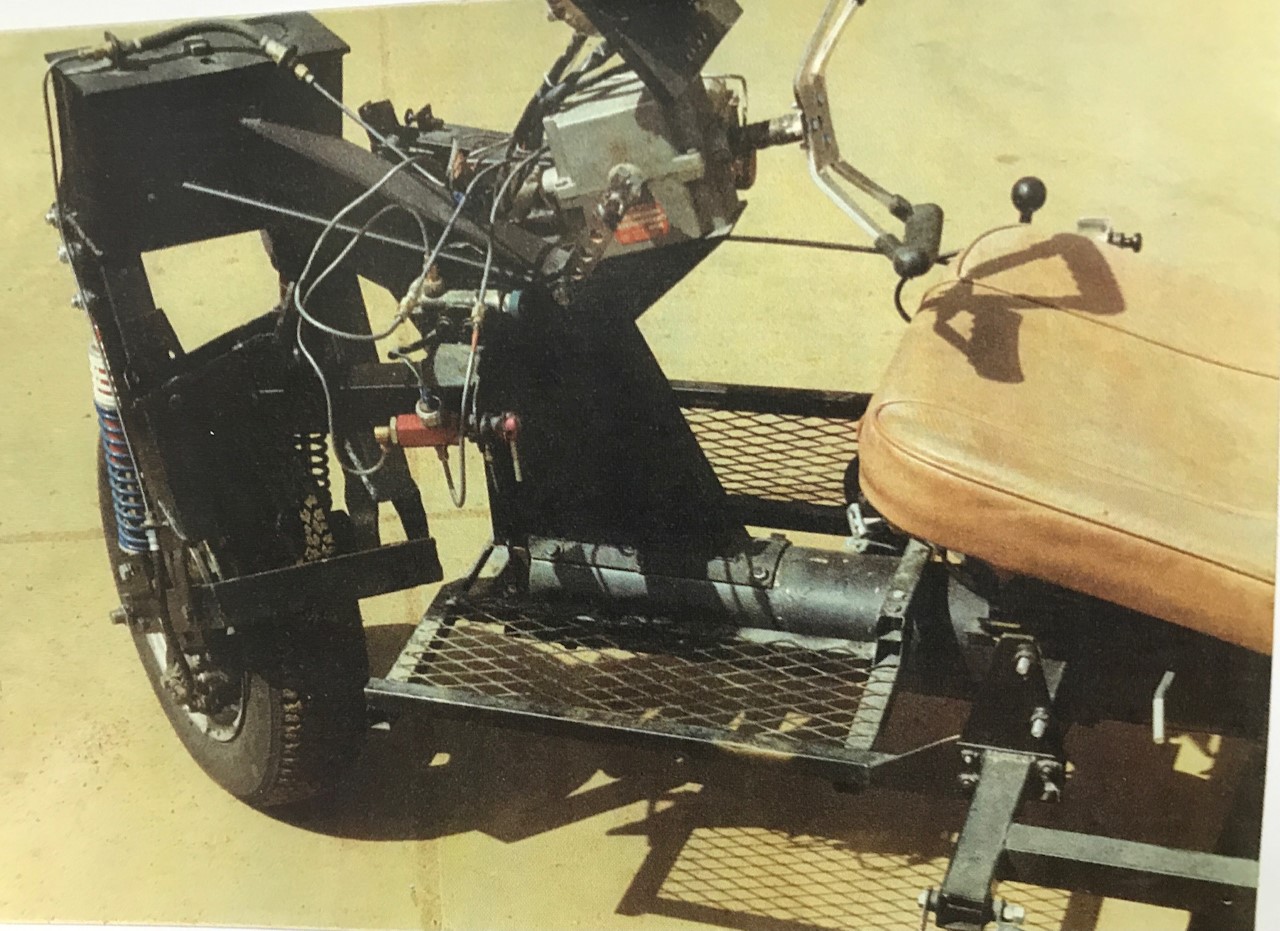
Notice the position of the front shock. Most rake angles
for motorcycles are
approximately 30 degrees. The Pulse actually has a negative rake angle.
I have tried many times at highway speeds to do this and found it to be dangerous. If you have ever ridden a motorcycle and left the kickstand down and tried to make a turn you would understand. I have been able to keep the Pulse on two wheels for a short time. It's very hard to do this because of wind conditions, your body weight changing slightly to one side or other cars passing and creating wind turbulence. Riding on two wheels means at sometime the out-rigger tire is going to touch. When this happens at highway speeds things become very dangerous, the teeter-totter from out-rigger to out-rigger can become very rapid and excessive. Over controlling when this happens would result in a disaster at this speed.
This also brings me to why the out-rigger tire wear is high. When driving with the out-rigger tires just touching at highway speeds creates excessive wear on them. Even the very slightest turn scuffs the out-rigger tire from side to side. Because of the outrigger tire location the tires will always scuff sideways when you turn. This can best demonstrated by just pushing the Pulse while turning and hearing the outrigger tire scuffing. Air pressure had made a major difference in tire wear so far. I have tried several tire pressures with the current set of tires and hope to get about 1200 miles before I have to replace them again. I am currently this set of tires at 13psi and will try 10psi on the next set of out-rigger tires. The first set of tire I was running 65psi and got less than 400 miles on them.
Other Notes
Coil-over springs kits and standard automotive shocks would not allow for the major differences in loads (passenger, gas, carried items) but does help in the rebound as the standard coiled shocks installed on some production units. By using my onboard adjustable air-shocks I have found the best shock position to be with as little load as possible on the out-riggers tires. This is hard to judge unless you raise the shock height while driving until you can teeter-totter then just lower the shocks until both out-rigger tires just touch. With the on board air-shock pressure gage this allows you to preset your normal load setting with out having to do this each time. The only time I have found more load on the out-rigger tires helps is when there is a heavy cross-wind driving at highway speeds. Also I have found Pulse handles better with a passenger load driving at highway speeds. One other plus for having air-shocks is when backing up by pushing or using the electric reverse unit. It's much easier to move the Pulse backwards when one out-rigger tire is lifted. This is especially noticed when making even a slight turn in reverse. Using coiled shocks and changing loads does not allow you to adjust the delicate load requirements to minimize the out-rigger tire wear. I have also found that the front air-shocks require only an initial adjustment for an loaded or unloaded passenger load. I run the front wheel height between 10 and 11 inches. This height is measured using a ruler from the ground level to the front body edge of the front wheel cavity, taken at the center of this opening. The rear shocks do the most for load adjustment because of the loaded position of the passenger and storage compartment.
I have never checked the toe-in because there is no adjustment to correct it, but you can control the camber of the out-riggers to help decrease the wear at the center of the tire. The U.S. DOT defines motorcycles as "any vehicle that maintains not more than three wheels in contact with the ground and has a saddle seat for the rider." Is the Litestar/Pulse a motorcycle? I find the Litestar/Pulse design runs mainly on four wheels and sometimes rides on three when you are turning. This is why the out-rigger tire wear is so high they are almost always in contact with the road. I have a demonstration video that was made for marketing the Pulse and you can see that it rides on all fours when going down the highway and lifts a tire in a turn.
I am also in the process of building a high point tire balancer for the eight-inch out-rigger tires. Automotive tire balancers were never designed for this small of a tire and they do a poor job of balancing them. I will post more on this when it is completed.
More on Outrigger Tires
Bill Senter.....
1.I run recommened tire pressure printed on the tires.
2.About 60-65 seems the norm on Interstate.
3.Out-riggers touching the ground depends on the weight, tire pressure and how they are adusted. Ed Butcher told me to adjust with a 3/4" board, so you can slid under one of outriggers and it will rock side to side. He thought that was the best ride.
Luke Chaplin.....FOR THE SCRANTON built LITESTAR with the smaller outrigger tires...
I found the 3.40X3.00-5 outrigger tires and tubes at www.desser.com .
They also have the 2.80X2.50-4 tires, but I think that the BD-200 is the only one with those. I assume the other Scranton Litestars had the 3.40X3.00-5 tires also. The Pulse outriggers use regular 8 inch trailer tires and wheels which are available everywhere. I got mine at the local tractor parts store. The 145SR13 tires on the Pulse came from Pep boys. The Litestar has 145SR13 on front but 145SR15 on the rear. This one may be tough, it's a size used only on early 60's VW vans in this country, although a motorcycle tire is available in that size.
I dropped in at the local speed shop only four miles from my house to get some of that exhaust wrap, and surprise! Laying right there next to the counter were 3.40X3.00-5 smooth thread tires. The guy said they were used on "junior class dragsters" and they were only $10 each, made by Cheng-Shin. Unfortunately, they did not have tubes for them. They do unfortunately say "Not for highway use" on them, which could cause problems in some states (grind it off?). I have to wonder if a highway approved tire is made in that size, and if that was part of the reason for going to the eight inch outriggers that did have highway approved trailer tires (the original outrigger tires also were not highway approved).
Your Host, Steve Schmidt

Last Update: 10-20-20......
This is a personal
website and is not affiliated with the designer, manufacturer or any company officials/employees.
Disclaimer:
Litestar Pulse Website is provided to you free of charge, "as is."
The best efforts to maintain accurate Litestar Pulse
Website history, information, repair tips and content, however, it is
not responsible for the content of its information, opinion providers.
You should not assume that Litestar Pulse Website is error-free and
makes no guaranties as to the accuracy, currency, content, or quality
of any such information.
Copyright 2020 © All rights reserved